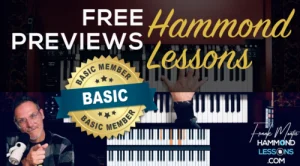Larry Young (Jazz Organist)
The Innovator of Modal Jazz Organ
Early Life & Background
Larry Young (October 7, 1940 – March 30, 1978) was an American jazz organist who revolutionized the use of the Hammond B-3 in jazz. Born in Newark, New Jersey, Young began his career playing in soul-jazz and blues settings but later became one of the first organists to explore modal jazz, avant-garde, and fusion. His approach to the instrument was groundbreaking, pushing beyond the blues-based traditions of earlier organists like Jimmy Smith and Jack McDuff.
Career & Breakthrough
Young started out playing hard bop and soul jazz in the early 1960s, recording his first albums for Prestige Records. However, it was his move to Blue Note in the mid-1960s that marked his true artistic evolution. Inspired by John Coltrane’s modal jazz explorations, Young adapted a similar harmonic and rhythmic complexity to the organ, creating a unique and innovative sound.
Key Early Albums:
- Testifying (1960) – A classic soul-jazz debut rooted in the blues.
- Young Blues (1960) – A hard bop album showcasing his early style.
- Groove Street (1962) – A transition between traditional organ jazz and his later experimental work.
While these early albums placed him in the lineage of Jimmy Smith and Jack McDuff, Young soon departed from the standard jazz organ trio format, embracing modal harmonies and freer improvisation.
Signature Sound: Modal Harmony & Space
Larry Young’s approach to the Hammond organ was radically different from his predecessors. Instead of relying on blues licks and groove-heavy bass lines, he incorporated:
- Modal improvisation – Inspired by John Coltrane and McCoy Tyner, using extended harmonies and fewer chord changes.
- Floating bass lines – Rather than traditional walking bass, he often played pedal tones and drones.
- Extended chord voicings – Utilizing quartal harmony (chords built in fourths) for a more open sound.
- Dynamic use of the Leslie speaker – Often manipulating speed mid-phrase for expression.
- Fluid, legato phrasing – His right-hand runs were more influenced by saxophonists than by earlier organists.
Larry Young’s Classic Drawbar Settings
- Upper Manual: 888000000 or 878000000
- Lower Manual: 848000000 or 888000000
- Percussion: ON (Soft, Slow, 3rd Harmonic)
- Vibrato/Chorus: Often OFF, but sometimes C3 for warmth.
- Leslie Speaker: Used expressively, favoring slow speed for sustained chords and fast speed for dramatic transitions.
Notable Recordings
Blue Note Era (1964-1969)
Young’s move to Blue Note marked a dramatic shift in his style, making him the first organist to fully embrace modal jazz:
- Into Somethin’ (1964) – His breakthrough, featuring Grant Green and Elvin Jones, influenced by Coltrane’s quartet.
- Unity (1965) – His most famous album, featuring Woody Shaw, Joe Henderson, and Elvin Jones, and considered the definitive modal jazz organ album.
- Contrasts (1967) – A mix of modal jazz and freer explorations.
Fusion & Experimental Years (1969-1978)
In the late 1960s, Young embraced jazz-rock fusion, working with some of the biggest names in the genre:
- Emergency! (1969) – With Tony Williams Lifetime, a groundbreaking fusion album that influenced Miles Davis.
- Turn It Over (1970) – A heavy jazz-rock session with John McLaughlin.
- Lawrence of Newark (1973) – An experimental, avant-garde album mixing free jazz and African influences.
Influence & Legacy
Larry Young redefined what was possible on the Hammond B-3 organ, influencing generations of musicians across jazz and fusion. His influence can be heard in:
- John Medeski (Medeski, Martin & Wood)
- Joey DeFrancesco
- Cory Henry
- Lonnie Smith
- Herbie Hancock’s fusion work
His contributions to jazz-rock fusion, particularly with Tony Williams Lifetime, helped shape the genre and laid the groundwork for later experiments in jazz and electronic music.
Later Years & Passing
Young remained an active performer and session musician throughout the 1970s, but his life was cut short when he passed away on March 30, 1978, at just 37 years old. Despite his relatively brief career, his impact on jazz organ and fusion remains profound.
Further Learning
Want to dive deeper into Larry Young’s organ playing?




